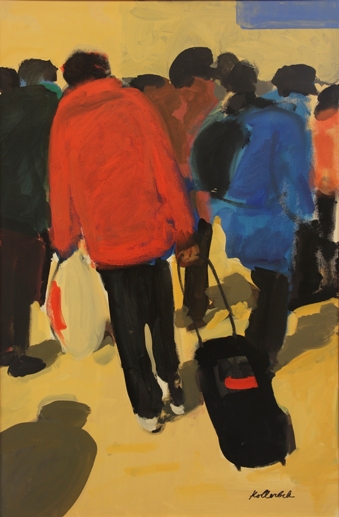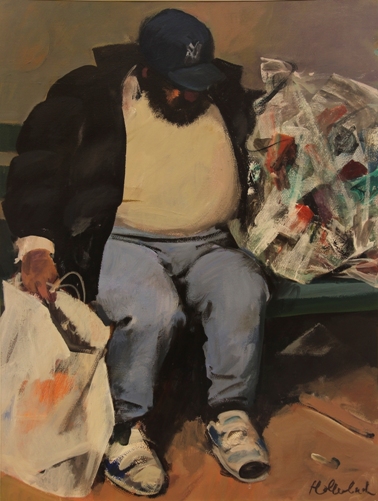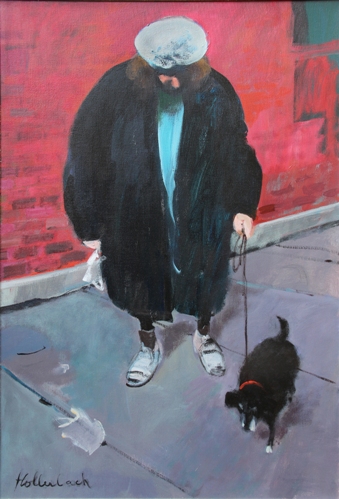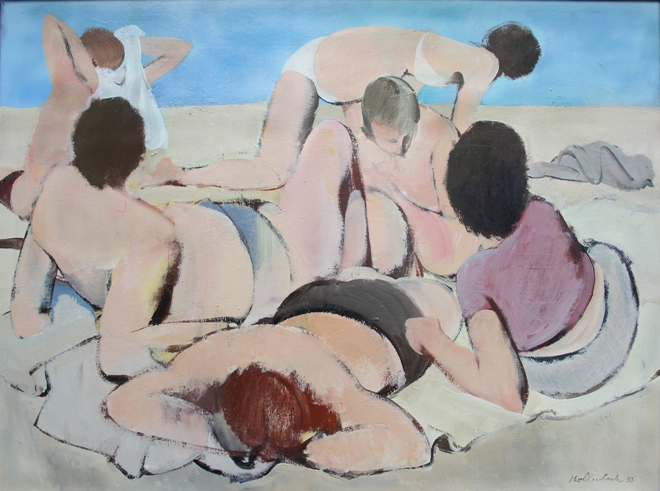Serge Hollerbach (Nov 1, 1923 – Feb 19, 2021)

This past week we got the sad news that the watercolor world has lost another master. “It is with great sadness,” wrote Frank Webb, “that we tell you that Serge passed away on Friday, February 19, 2021. He was at his home, in his bed, with two of the ladies who were taking care of him 24 hours a day. He died peacefully and with dignity. He was 97 years old.”
The Artist’s Story in His Own Words
By Serge Hollerbach (Nov 1, 1923 – Feb 19, 2021)
My life as an artist has three periods. Two brief ones, Russian and European, and a long one – American. I was born in 1923 in Pushkin (suburb of Leningrad). As a child I drew constantly and was encouraged by my parents and my Uncle Eric Hollerbach, who was a well-known art and literary critic in Leningrad, USSR in 1920-30. He lived close to us and it was in his apartment that I saw for the first time examples of Russian art of 19th and 20th centuries, mainly portraits, engravings, and stage designs.

When I grew older I started to visit the famous Hermitage Museum in Leningrad and saw paintings by Rembrandt, Rubens and masters of Italian Renaissance. At the age of 17 I had decided to become a painter and switched from a regular high school to a special High School of Art that was a part of the Academy of Fine Arts in Leningrad. My studies at the High School of Art lasted, unfortunately, only six months. On June 22, 1941 Nazi Germany attacked Russia, the suburb of Leningrad where I lived was occupied and subsequently I spent the war years as a laborer in Germany where I was sent together with hundreds of thousands of Russian men and women to work in the fields and factories.

The American Army liberated me in May 1945, and in 1946, having decided not to return to Russia, I enrolled as a student in the Munich Academy of Fine Arts. For the first time I experienced the so-called “cultural shock”. If in the Russian High School of Art we spent hours and hours shading and correcting a drawing, in the Munich Academy we were literally “drilled” in quick linear drawing and expressionistic characterization of objects, be it still life, landscape or model. I had to abandon slow and tentative approach and to adapt myself to a fast, grueling “hit or miss” pace. We were supposed to accentuate shapes, angles, exaggerate colors, staying however within the limits of a heightened reality.
Two cardinal sins were a) copying reality “like it is” and b) going into wild, senseless experimentation with meaningless shapes and colors, not related to a given subject. Four years of studying in Munich (6-8 hours a day, no summer vacations) gave me the essential skills in drawing and painting and more importantly, the direction and an uncompromising attitude toward all that is opportunistic and conventional in art. It served me well in the years to come. I didn’t graduate; I had one more year to go, but my visa came up and in the fall of 1949 I came to New York determined to continue my studies and to embark on the career of a professional artist.

New York City, with its rich cultural life, its many museums, galleries and art schools, helped me to find myself as an artist. I started to exhibit in the late 1950’s and continued to do so not only in New York, but across the country and in Europe. Knowledge that “talent” is many different things helped me a great deal in teaching and conducting workshops. Indeed, there is no point in forcing a person to become a realistic, figurative painter when he/she is not gifted “that way”. Her or his strength may be in design in flat color arrangements. Such ability can be best applied to landscape or still life painting or to semi-abstract composition. It is the task of the instructor to find out what the inclination of every student is and to guide him or her to the realization of their potential.

About the Artist

Serge Hollerbach was born in Pushkin (Tzarskoye Selo), Russia, in 1923. He studied in West Germany at the Munich Academy of Fine Arts from 1946 to 1949; then he came to New York City to study at the Art Students League in 1951, and the American Art School of New York City in 1952. He has taught at the National Academy School of Fine Arts in New York, conducted workshops across the country, served as juror, and lecturer.
Publications include Composing in Acrylics (Watson-Guptill, 1988), Sketches in Pen & Ink and Watercolor (Newman and Saunders Galleries, 1987), Notes of an Artist (in Russian; Overseas Publications Interchange LTD, London, 1983), City’s Hot Shadows (also in Russian; Albatros Publishing House Paris, 1990), and the memoir New York Notebook (in Russian; The New Review Publishing, 2013), among others. In addition, he has published articles in American Artist, The Artist’s Magazine, and Today’s Art.
A National Academician, Hollerbach has served as honorary president of the American Watercolor Society and also belongs to Allied Artists of America, Audubon Artists, and the National Society of Painters in Casein and Acrylic. Among his numerous prizes are the American Watercolor Society’s Gold Medal in 1983, and Silver Medal in 1989 and 1990; an Audubon Artists Silver Medal in 1983; the Grumbacher Gold Medallion in 1988; Allied Artists of America Gold Medal 1985 and 1987; and First Prize in The Rocky Mountain National Watermedia Exhibition in 1986 and 1987.
Hollerbach’s work is in several private and public collections, including the National Academy of Design in New York, the Yale University Art Gallery, the University of Kentucky Art Museum, The Georgia Museum of Art, The Butler Institute of American Art in Youngstown, Ohio, and the Philbrook Art Center in Tulsa, Oklahoma, just to name a few.
For more stories like this one, sign up for our free weekly e-newsletter.









Another watercolor master passed away in November: Gerald F Brommer, a master painter and teacher, who put together a massive body of work and mentored hundreds of students. An amazing artist, author and teacher, passed away at 93 in Studio City, Can.
Auto correct… California
[…] Here is a piece that ran in the American Watercolor https://americanwatercolor.net/in-his-own-words/ […]